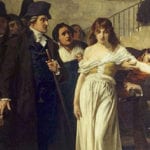 Creepy
Creepy  Creepy
Creepy  Technology
Technology 10 Scientific Breakthroughs of 2025 That’ll Change Everything
 Our World
Our World 10 Ways Icelandic Culture Makes Other Countries Look Boring
 Misconceptions
Misconceptions 10 Common Misconceptions About the Victorian Era
 Mysteries
Mysteries 10 Strange Unexplained Mysteries of 2025
 Miscellaneous
Miscellaneous 10 of History’s Most Bell-Ringing Finishing Moves
 History
History 10 Great Escapes That Ended Right Back in Captivity
 Weird Stuff
Weird Stuff 10 Fascinating Things You Might Not Know About Spiders
 Food
Food 10 Everyday Foods You Didn’t Know Were Invented by the U.S. Military
 History
History 10 Odd Things Colonial Americans Kept at Home
 Creepy
Creepy 10 More Representations of Death from Myth, Legend, and Folktale
 Technology
Technology 10 Scientific Breakthroughs of 2025 That’ll Change Everything
 Our World
Our World 10 Ways Icelandic Culture Makes Other Countries Look Boring
Who's Behind Listverse?

Jamie Frater
Head Editor
Jamie founded Listverse due to an insatiable desire to share fascinating, obscure, and bizarre facts. He has been a guest speaker on numerous national radio and television stations and is a five time published author.
More About Us Misconceptions
Misconceptions 10 Common Misconceptions About the Victorian Era
 Mysteries
Mysteries 10 Strange Unexplained Mysteries of 2025
 Miscellaneous
Miscellaneous 10 of History’s Most Bell-Ringing Finishing Moves
 History
History 10 Great Escapes That Ended Right Back in Captivity
 Weird Stuff
Weird Stuff 10 Fascinating Things You Might Not Know About Spiders
 Food
Food 10 Everyday Foods You Didn’t Know Were Invented by the U.S. Military
 History
History 10 Odd Things Colonial Americans Kept at Home
10 Common Professions With Secretly Fascinating Origins
What do barbers and surgeons have in common? Why did the first computer programmer never get to program a computer? And why did making a telephone call once mean being cursed at by drunk teenagers? The answers all lie in the downright weird origins of the boring professions we take for granted today.
10Flight Attendants

Today, the stereotypical flight attendant is a beautiful woman in a tight skirt. But the very first flight attendants were exclusively male. Known as “couriers,” they often included the young sons of the businessmen who sponsored early flights. As air travel became more common, the responsibility of attending to passengers and serving drinks actually fell to the co-pilot. Professional flight attendants were only hired again in the 1930s, when the first female flight attendants are recorded. The women in question were actually nurses, since airlines believed passengers would feel much safer with medical assistance to hand.
The very first female flight attendant was Ellen Church, who was both a pilot and a registered nurse. Since airlines refused to hire a female pilot at the time, Church convinced a reluctant Boeing Air Transport (now United Airlines) to hire her and seven other nurses as attendants. As well as assisting with airsickness, Church argued that female flight attendants would help deal with nervous passengers, telling the airline that it “would be good psychology to have women up in the air. How is a man going to say he is afraid to fly when a woman is working on the plane?”
When World War II broke out, most nurses left to serve with the military, prompting airlines to begin hiring ordinary women to replace them. Men only became flight attendants again in the 1960s and have not regained their dominance to date.
9Barbers
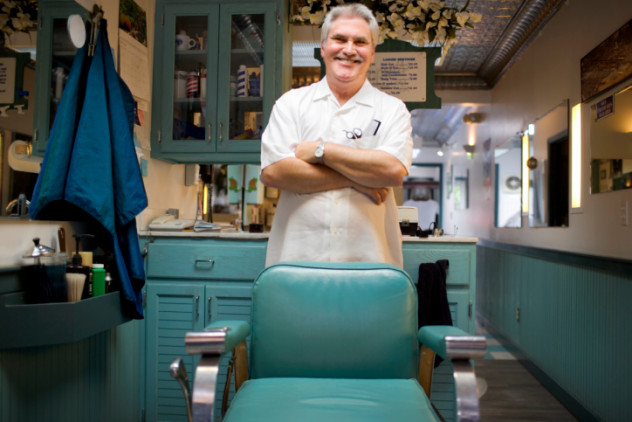
Professional barbers date back at least to Ancient Egypt, where wealthy nobles kept personal barbers on staff. In Ancient Greece and Rome, the barbershop was known as a fountain of gossip and political debate. But things really got interesting in medieval Europe, where barbers started performing surgeries as well as cutting hair.
It all started in AD 1163, when the pope issued a degree banning members of the clergy from shedding blood. This was a problem for priests and monks, who often carried out bloodletting and other minor surgical procedures. Instead, they turned to barbers, who already carried razors and were stationed at many monasteries to keep the monks clean-shaven. Since medical doctors viewed bloodletting as beneath them, they were happy to let barbers take it over entirely, along with other unpleasant procedures like amputations and lancing abscesses.
Barber-surgeons became even more prominent due to the bubonic plague, which caused a high mortality rate among trained medical doctors. In England, the barbers and surgeons were originally two separate guilds, but grew together until Henry VIII merged them in 1540. Ambroise Pare, considered the father of modern surgery, started out as a barber. It has even been suggested that the familiar red and white barber pole originally symbolized bloody bandages. Of course, the emergence of modern medicine clashed with the idea of an informally trained barber-surgeon, causing barbers to be gradually forbidden from carrying out medical procedures during the 18th century.
8Soccer Referees

Early soccer matches had no referee. Instead, the captains of the two teams were responsible for settling all disagreements on the field. As football became more competitive, each side would bring an umpire to the pitch. The two umpires ran around the field observing the game as it progressed, but did not interfere in disagreements except when asked by the players.
Since the umpires were on the payroll of the competing teams, they often got into lengthy disagreements, prompting the introduction of a neutral referee appointed by both teams. The referee watched the game from the touchline and acted as the timekeeper. He did not interfere in the game, although he had the power to warn players and even send them off for repeated rough play. Instead, he was only consulted when the two umpires could not reach an agreement.
In 1891, the laws of the game were amended to give the referee the final say on the pitch, effectively creating the modern referee. The two umpires evolved into the linesmen or assistant referees. However, the referee would have to wait until the 1970 World Cup to get his familiar red and yellow cards, which were modeled on traffic lights and introduced to help avoid confusion over whether a player had been sent off or not.
7Telephone Operators

In the early days of the phone, people couldn’t simply dial a number and expect to be connected. Instead, they would first call their telephone operating center, where a telephone operator would manually operate a switchboard to route the call to the intended recipient. A particularly complicated call might require up to six operators furiously plugging switches into wall-sized switchboards.
The first call operators were young teenage boys. Telephone companies knew that working a switchboard was hard work and thought teenage boys would have the dexterity, energy, and reflexes needed. More importantly, they were cheap.
Unfortunately, there were some predictable problems with employing only teenagers. The boys soon developed a reputation for playing practical jokes on callers, including ending their calls without warning and deliberately connecting two strangers together to enjoy the resulting confusion. They also had a tendency to swear at customers and were known for fighting and drinking alcohol while working.
The whole thing was such a disaster that Bell eventually fired all of its teenage male operators en masse, replacing them with young women, who were considered more genteel and equally cheap. Other telephone companies followed suit and men only became operators again after equal rights legislation was passed in the 1970s.
6Computer Programming
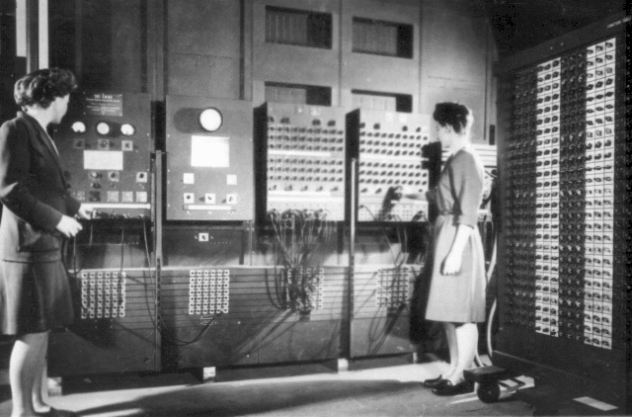
Today, we think of computer programmers as young male geeks. But the first computer programmers were usually women. In fact, arguably the world’s first computer programmer was Ada Lovelace, a female mathematician and the daughter of Lord Byron. Lovelace was a close friend and colleague of Charles Babbage, who first conceived of a programmable computer. While translating an article on Babbage, Lovelace wrote an algorithm that would prompt Babbage’s “Analytical Engine” to perform mathematical calculations. This is considered the first program. Lovelace was also the first to suggest that computers had applications beyond performing calculations, since it was possible to represent any type of data using only numbers. Unfortunately, Babbage never actually built his computer, so Lovelace’s work remained theoretical.
In the 1940s, the University of Pennsylvania developed the ENIAC machine (pictured above), one of the first electronic computers. Six women were hired to “set up” computations on the machine, becoming the first practical computer programmers in the process. Women continued to dominate the field into the 1960s, with Cosmopolitan magazine declaring that programming offered some of the best opportunities for women to develop a career. A leading female computer scientist, Dr. Grace Hopper, even told the magazine that women were naturals at programming, since it was “just like planning a dinner.” Meanwhile, men preferred to stick to hardware, which was seen as more prestigious than “clerical” software work.
Sadly, male programmers eventually came to dominate the field by making deliberate efforts to force their female counterparts out. Among other things, they formed male-only professional associations and encouraged hiring requirements that benefited men, who were more likely to have studied math at school and university. Male programmers also pushed for the introduction of personality profiles for job candidates, which were slanted toward male applicants. Incidentally, those same personality profiles argued that the ideal programmer would be disinterested in people, helping to create the stereotype of the antisocial computer nerd so prevalent today.
5Firefighters
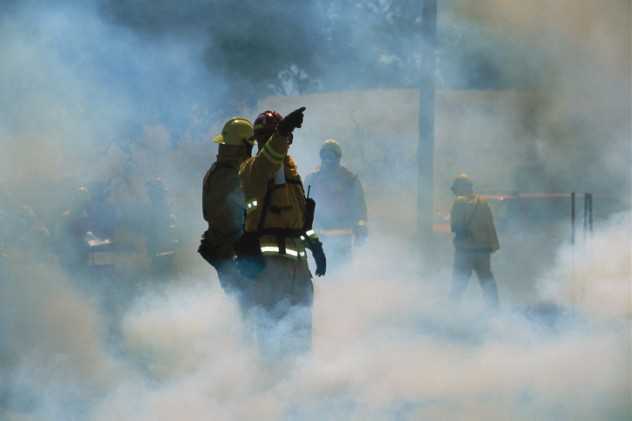
Firefighting itself began as soon as humans started living in packed-together, flammable houses. However, the first professional firefighting outfit we know of dates back to Ancient Rome, where the famously wealthy Marcus Licinius Crassus formed his own private outfit. Whenever there was an outbreak of fire, his team would rush to the scene and begin negotiations with the owner of the property. If both sides agreed on a fee, they would put out the fire. It not, Crassus’s team would simply leave, allowing the property to burn.
Possibly inspired by Crassus, the Emperor Augustus eventually formed his own fire brigade, known as the Vigiles or “bucket brigade.” Unlike Crassus and his men, the Vigiles’ services were free. Later, firefighting was mostly left up to the local watch, who were often more concerned with catching criminals than fighting fires. In 1666, the Great Fire of London prompted English insurance companies to form their own fire brigades. Policyholders would be given a badge to attach to their building. Whenever there was a fire, local fire brigades would be called out, but would only put out the fire if the building was insured with the right company. As a result, houses were frequently left to burn until the correct fire brigade arrived.
Edinburgh finally formed the first proper fire brigade in 1824. The chief officer was James Braidwood, who was later recruited to enact similar reforms in London. After establishing the principles of modern firefighting, he was killed while battling a London warehouse fire in 1861.
4Nurses

Today, men make up only about 6 percent of all nurses in the US. But the world’s first nursing school, established in Punjab around 250 BC, only accepted men, since women weren’t considered “pure” enough to become nurses. An early Christian group known as the Parabolani was comprised of men who acted as nurses to the sick and dying (although they also developed a nasty reputation for violently clashing with local non-Christians). In the Middle Ages, a number of religious male nursing orders emerged, including the Alexian Brotherhood, which still exists today.
Modern professional nursing is often traced back to Florence Nightingale, who believed that the sick would greatly benefit from gentle care based on scientific principles. She put her ideas into practice during the Crimean War, when she brought a group of female nurses to reorganize the military hospital at Scutari, slashing death rates and becoming famous around the world. Nightingale’s success revolutionized European healthcare and established nursing as a respectable profession for women. Meanwhile, the number of male nurses decreased. The US Army even banned male nurses entirely in the early 1900s and some nursing schools continued to reject male applicants until the early ’80s.
3Secretaries

Secretary-like work dates back to the scribes of the ancient world. In fact, the name itself derives from the Latin word for secret (secretum), since early secretaries were often trusted with confidential information by their employers. By the medieval period, secretarial work was largely done by priests and other clerics (hence “clerical work”), but full-time secretaries reappeared in the Renaissance.
Almost all of these early secretaries were men, but large numbers of women began to enter the field during the American Civil War, when a shortage of manpower caused the US Treasury to hire 1,500 female clerical workers. Women dominated the profession by the late 19th century, helped by the invention of the typewriter, which was seen as better suited to delicate female fingers.
Unfortunately, the job remained poorly paid and offered few opportunities for advancement, even as it came to require a great deal of skill (Time magazine boasted secretaries able to take dictation on two separate stories simultaneously, one with each hand). Secretaries were often required to perform humiliating, menial tasks or perform personal errands for their boss. Future Cosmopolitan editor Helen Gurley Brown recalled her early days as a secretary in the 1940s, when the men in the office would pick a female secretary “to chase and catch so they could take off her underwear.”
Still, secretarial work remained the best option for many women, with one guidebook advising women to “be a lawyer’s or a doctor’s or a scientist’s secretary because you once hoped to be a lawyer or a doctor or a scientist.” Things started changing in the ’60s and ’70s, when the women’s liberation movement and increased opportunities in other fields resulted in a secretary shortage. The National Secretaries Association began training its members in accountancy and other skills needed to move up into management positions, while the US government warned senior bureaucrats against treating their secretaries as “char help.” Even the name “secretary” began to fall out of favor, replaced by the more professional-sounding “administrative assistant.”
2Lawyers
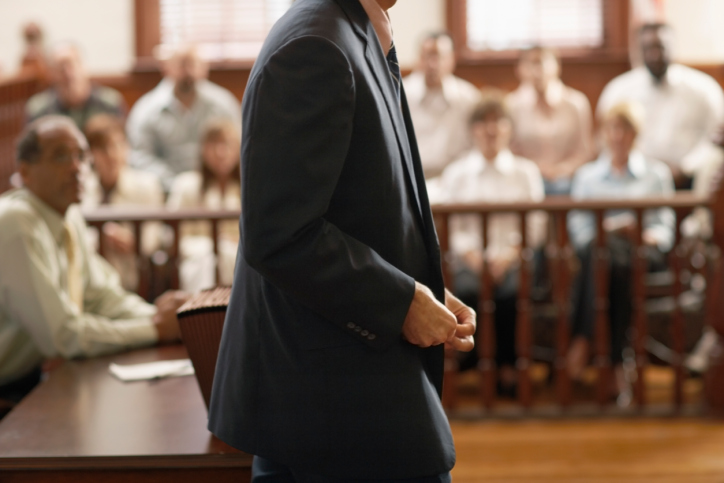
Legal systems are almost as old as human civilization, dating back beyond the famous Code of Hammurabi in the 18th century BC. However, an actual legal profession didn’t emerge until much later. The sophists of Ancient Greece were a class of scholars who became arguably the first lawyers, but they were inhibited by laws requiring citizens to defend themselves in court. Eventually, citizens could ask someone to advocate on their behalf, but they were strictly prohibited from paying them for their services. Ancient Rome had similar restrictions, but Roman orators neatly circumvented them by quietly requesting “voluntary gifts” from their clients, creating perhaps the first class of paid lawyer. Recognizing this fact, the late Roman Empire abandoned the restrictions and established a system of fees for legal representation.
The Roman legal system survived Rome’s collapse thanks to the Catholic Church, which established its own system of canon law. Civil legal experts reemerged in the 12th century, when a center for the study of Roman law was established at Bologna. In England, the legal system was established by a special society known as the Inns of Court, which trained apprentices to argue the law before the royal courts. From there, a system of solicitors and barristers developed, which endures to this day. Unlike the rest of Europe, the English legal system largely came about via precedent rather than through government legislation. The US, which Alexis de Tocqueville described as dominated by lawyers in the 19th century, adopted a more codified system, including a written constitution.
1Cops

Law enforcement has a long history, although the earliest policemen usually had to serve as garbagemen and firefighters as well. The world’s first organized police force operated in Egypt around 3000 BC, although they were mostly concerned with maintaining public order and collecting taxes. Egypt’s 42 provincial police chiefs bore an ominous title that translates to “chief of the hitters.” In Ancient Greece, the city-state of Athens had a group of magistrates called “The Eleven” who oversaw criminal justice. They were assisted by a team of 300 armed Scythian slaves charged with maintaining order in the city.
Other ancient cultures also drew their police force from slaves or the lower classes, meaning it was usually perceived as a degrading job. The Romans, somewhat typically, barely bothered with law enforcement at all, preferring to let citizens sort out their own problems via lawsuits in the civil courts. Augustus did create three “urban cohorts” of police, but they were more concerned with maintaining public order than stopping individual crimes. The tendency to view crime as a private issue rather than a problem for the government lasted into the Middle Ages, with rulers seldom attempting to establish any sort of police force.
In England, the Anglo-Saxon Frankpledge system required communities to band together to protect themselves and maintain the peace. If a crime was committed, all the men in the community were required to raise a “hue and cry” and pursue the criminal. Anyone who refused to join the pursuit would be considered a criminal himself. If there were no witnesses to the crime, the victims were basically on their own to investigate, since there was no permanent police organization. The Normans introduced the office of constable, charged with overseeing local watches and providing security, but essentially kept the “hue and cry” system where civilians were responsible for apprehending criminals.
England’s first salaried police force, the “Bow Street Runners,” was created by two London magistrates in 1750, but it took until 1812 for the government to establish the London Metropolitan Police Department, which served as the model for policing in the rest of the English-speaking world. In the US, Boston became the first city to establish a professional police force in 1838, replacing a system of voluntary watchmen (who were mostly trying to avoid military service) and semi-professional constables.
Elizabeth has Facebook and Twitter pages where she posts interesting facts several times a day.
